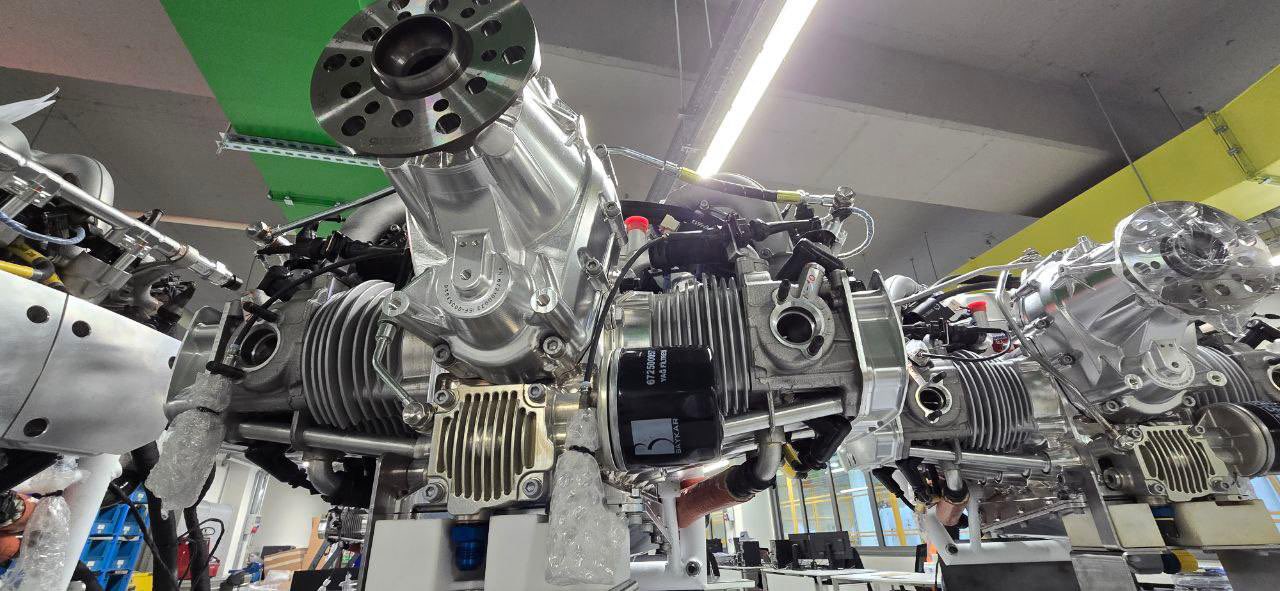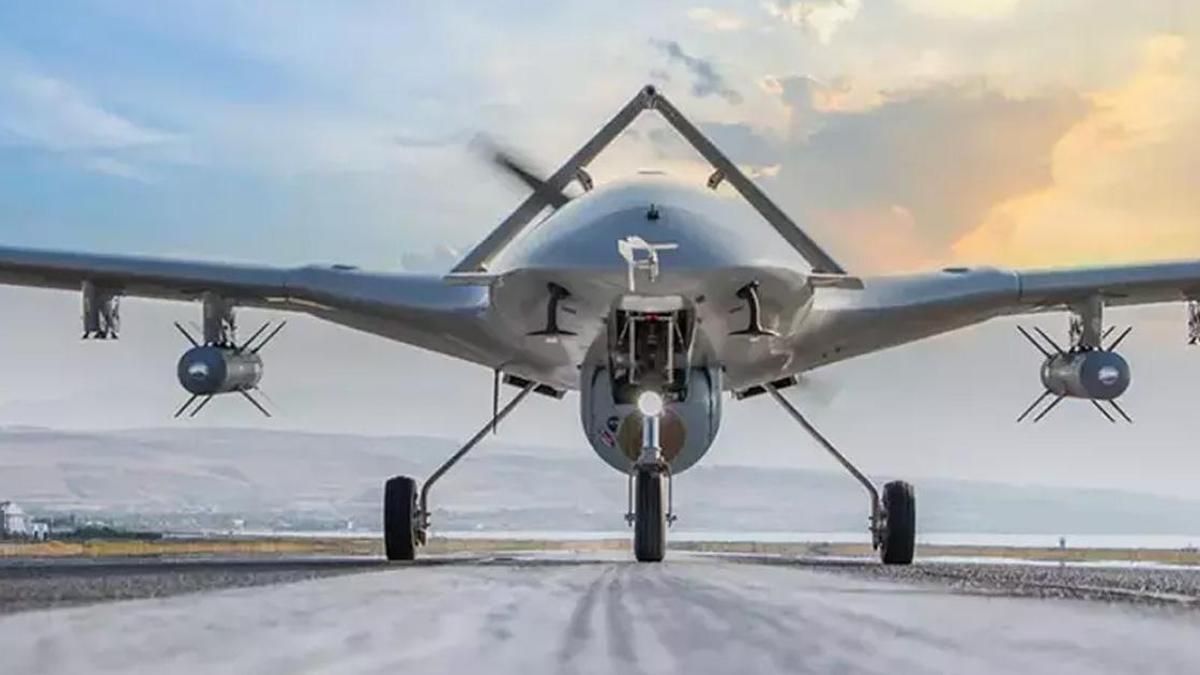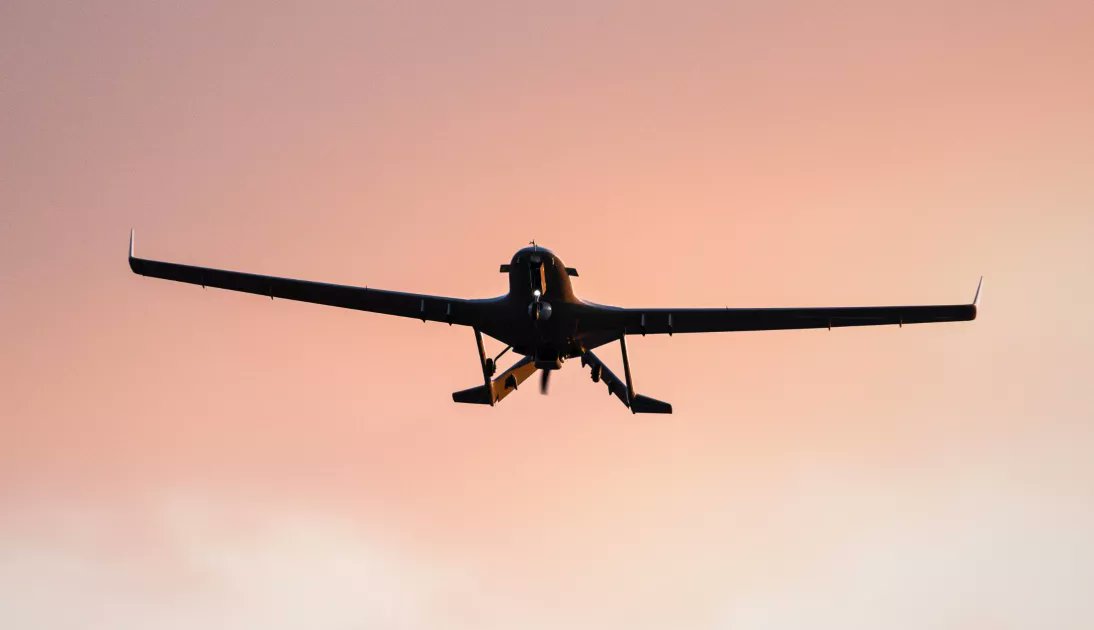Game-Changer in the Sky: Bayraktar TB2 Launches a New Chapter with Turkish-Built TM-100 Engine
The announcement was made by Baykar Chairman Selçuk Bayraktar via social media, confirming that the Bayraktar TB2, now equipped with a fully indigenous engine, had taken to the skies for a second time in recent weeks.
(DEFENCE SECURITY ASIA) — The Bayraktar TB2, Turkey’s most iconic and combat-proven unmanned aerial system, has successfully completed its second flight test powered by the newly developed TM-100 engine—a landmark achievement in the country’s pursuit of full defence autonomy.
The announcement was made by Baykar Chairman Selçuk Bayraktar via social media, confirming that the Bayraktar TB2, now equipped with a fully indigenous engine, had taken to the skies for a second time in recent weeks.
The development of the TM-100 engine signals a decisive strategic shift by Baykar in response to soaring international demand and growing pressure to insulate critical supply chains from foreign dependency and export controls.
Backed by a robust collaboration of 40 Turkish defence companies under the SAHA Istanbul industrial cluster and fully financed by Baykar, the TM-100 propulsion system was engineered from the ground up to meet the complex operational demands of tactical combat drones.
The TM-100 engine features a triple-redundant digital control system, modular power packs, and sophisticated thermal regulation architecture—qualities that now position it as the most advanced powerplant in its class.
The engine has already completed its maiden flight trials, further validating Türkiye’s ambition to achieve full-spectrum sovereignty in unmanned aerial vehicle (UAV) technologies.
Baykar General Manager Haluk Bayraktar took to social media to underscore the collective effort behind the success, stating:
“We believed, we worked together, and we succeeded…”

Equipping the Bayraktar TB2 with a domestically built engine dramatically reduces its vulnerability to export restrictions, particularly those arising from shifting Western political calculations or sanctions regimes.
It also ensures a secure and uninterrupted flow of spare parts and maintenance support, strengthening the drone’s operational readiness in frontline deployments.
Producing the engine in-country significantly lowers lifecycle and logistical costs, offering a major advantage to Baykar’s growing list of export clients.
As the world’s most mass-produced tactical UCAV, the Bayraktar TB2 now represents not only a Turkish success story, but a flagship platform in the global drone warfare revolution.
Originally developed entirely in-house—including its airframe, avionics, flight control system, and software—the TB2 initially relied on a foreign-supplied piston engine, which was not deemed mission-critical for its role.
This early reliance attracted criticism from analysts concerned about supply chain integrity, though Baykar’s leadership made the calculated decision to focus resources on more strategically sensitive subsystems.
At the time, a locally developed engine was not seen as cost-effective, particularly for a UAV category that was still proving its combat and export potential.
However, the overwhelming battlefield success of the Bayraktar TB2 across multiple conflicts has fundamentally altered that equation—transforming the platform into a globally dominant, export-driven asset.

Today, the TB2 is not only the most widely deployed UCAV in its category, but also the most exported and combat-tested, with a proven record across operational theatres from the Middle East to Eastern Europe and North Africa.
Its most consequential contribution, however, lies in its disruptive influence on modern warfare, particularly in asymmetric conflicts where it has redefined cost-effective airpower and strategic lethality.
 Nagorno-Karabakh War (2020) – A Tactical Paradigm Shift for Azerbaijan
Nagorno-Karabakh War (2020) – A Tactical Paradigm Shift for Azerbaijan
During the 2020 Nagorno-Karabakh war, the Bayraktar TB2 was instrumental in enabling Azerbaijan to regain territory through a combination of surgical airstrikes and persistent ISR operations against Armenian defences.
The drone’s real-time precision strike capability devastated tanks, artillery systems, and mobile air defences, often capturing footage that was swiftly disseminated through social media and strategic communications channels.
This conflict marked a turning point in the military application of drones, with many analysts labelling it the first “drone-dominated war” of the modern era—where air superiority was achieved without traditional manned aircraft.

 Ukraine-Russia War (2022–Present) – A Symbol of National Resilience
Ukraine-Russia War (2022–Present) – A Symbol of National Resilience
In the opening phases of Russia’s full-scale invasion of Ukraine, TB2s were deployed to great effect, targeting Russian armored columns, mobile command posts, and logistical nodes with extraordinary precision.
The drone quickly emerged as a symbol of Ukrainian defiance, capturing global attention and inspiring civilian-led fundraising campaigns, memes, and patriotic songs celebrating its battlefield prowess.
Even in highly contested environments saturated with Russian electronic warfare and layered air defence systems, the TB2 demonstrated impressive survivability and mission effectiveness.
 Affordable Lethality – Democratizing Drone Warfare
Affordable Lethality – Democratizing Drone Warfare
What distinguishes the Bayraktar TB2 from its Western counterparts is its ability to deliver high-end ISR and strike capabilities at a fraction of the cost—estimated at just US$5 million per unit.
This affordability has allowed developing and middle-income countries to access precision airpower once monopolized by NATO-grade assets such as the MQ-9 Reaper, radically shifting regional military balances.
By combining proven lethality, cost-efficiency, and operational adaptability, the Bayraktar TB2 has redefined the tactical UAV landscape—altering battlefield doctrine and empowering state and non-state actors alike to project decisive force with minimal footprint.

Bayraktar TB2 – Technical Overview of a Combat-Proven UAV
Type: Tactical Armed Unmanned Aerial Vehicle (UCAV)
Manufacturer: Baykar Makina, Türkiye
Role: Intelligence, Surveillance, Reconnaissance (ISR) and precision strike
Crew: Remotely operated by a three-person ground control team
First Flight: May 3, 2014
Operational Entry: 2014 (Turkish Armed Forces)
Dimensions
-
Length: 6.5 m
-
Wingspan: 12 m
-
Height: 2.2 m
-
Maximum Take-Off Weight: 700 kg
Performance
-
Endurance: Up to 27 hours (record: 27 hours, 3 minutes)
-
Operational Altitude: 18,000–25,000 ft
-
Max Altitude: 27,030 ft (Turkish national record)
-
Cruise Speed: ~70 knots (130 km/h)
-
Max Speed: ~120 knots (222 km/h)
-
Control Range:
-
Line-of-Sight: 150–300 km
-
SATCOM (TB2S): Extended via TÜRKSAT satellite
-
-
Climb Rate: 30,000 ft in ~25 minutes (TB2T-AI)
Powerplant
-
1 × Rotax 912-iS internal combustion engine (105 hp)
-
Planned upgrade: Baykar TM100 turbine engine (~100 hp, TB2T-AI variant)
-
2-bladed variable-pitch pusher propeller
-
Fuel Capacity: 300 litres
Payload & Armament
-
Payload Capacity: 150 kg
-
Hardpoints: 4 underwing pylons
-
Munitions:
-
MAM-L: 22 kg laser-guided smart munition (range: 8–14 km)
-
MAM-C: 6.5 kg multipurpose warhead
-
BOZOK: Laser-guided munition
-
Kemankes: Mini smart cruise missile
-
UMTAS: Long-range anti-tank missile (8 km, 100% accuracy)
-
Sensors & Systems
-
EO/IR camera modules
-
Laser Range Finder, Designator, and Pointer
-
Optional AESA radar
-
Optional Electronic Warfare (EW) payloads
Avionics
-
Triple-redundant flight control system
-
Fully autonomous taxi, takeoff, cruise, and landing
-
Redundant servo actuators and sensor fusion
-
AI variant (TB2T-AI): Equipped with 3 AI processors for enhanced autonomy

Communications
-
LOS: Ground-based antennas, 150–300 km
-
SATCOM (TB2S): Anti-jamming and long-range operation
-
BGAM: High-resolution, real-time video transmission
Structure & Materials
-
Monocoque fuselage with inverted V-tail
-
Carbon fiber, Kevlar, hybrid composites
-
CNC-milled aluminum joints
-
Low radar and acoustic signature for stealth missions
Ground Control Station (GCS)
-
NATO-standard ACE-III mobile unit
-
Operator consoles for flight, payload, and image analysis
-
Includes climate control, NBC filtration, internal comms, and power units
Operational Record
-
Over 750,000 flight hours as of 2024
-
Deployed by 33 countries including Ukraine, Azerbaijan, Qatar, Poland
-
Notable records:
-
27-hour endurance flight
-
27,030 ft maximum altitude
-
First Turkish-built UAV to surpass 200,000 flight hours (June 2020)
-
Variants
-
TB2 Base: ISR-focused, optional strike
-
TB2 + MAM-L: Strike-enabled
-
TB2S: SATCOM integrated
-
TB2T-AI: Turbo-powered, AI-enhanced, increased payload and speed
Additional Capabilities
-
All-weather operation, including snowstorms and desert heat
-
Low operating cost enables rapid deployment and easy sustainment
-
Proven effectiveness in Syria, Libya, Nagorno-Karabakh, and Ukraine
-
Nicknamed the “Pantsyr Killer” for neutralising Russia’s Pantsyr-S1 air defence systems
In sum, the Bayraktar TB2 exemplifies the evolution of unmanned warfare—fusing indigenous innovation with battlefield realism to become one of the defining military platforms of the 21st century.
— DEFENCE SECURITY ASIA


